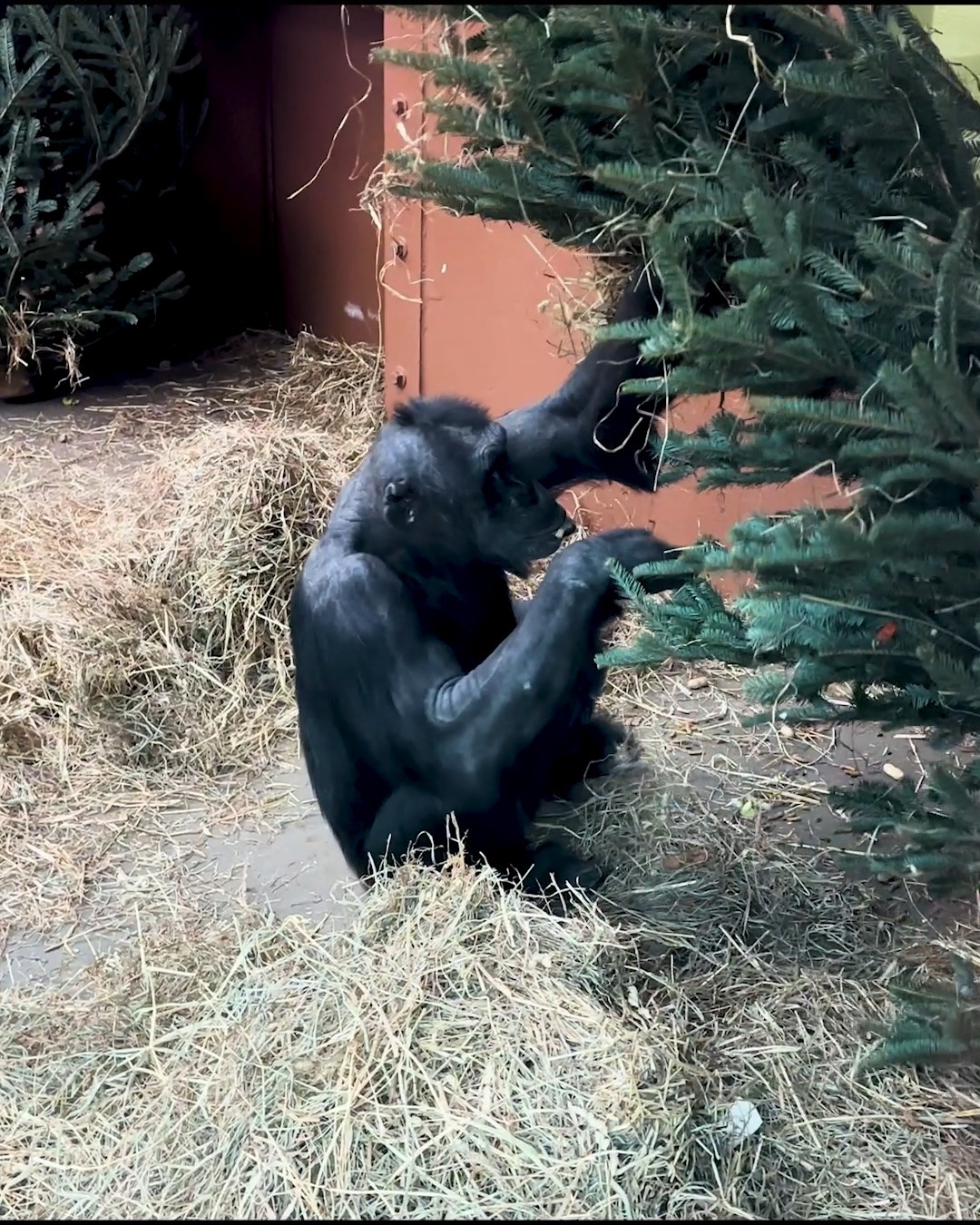- Overview of the concept of post-holiday enrichment for animals and its importance in zoo management.
- Detailed profiles of Mwelu, Jimbo, and Ripley, highlighting their backgrounds and personalities.
- Explanation of how Christmas trees are used in animal enrichment and their benefits.
- Exploration of the role of enrichment in animal welfare and conservation efforts.
- Insights into the environmental and educational implications of animal enrichment practices.
Post-holiday enrichment is a practice gaining attention in zoology and zoo management. It involves introducing novel activities or materials to animals’ environments to stimulate their physical and cognitive functions after special events like holidays. This strategy is crucial for maintaining animal welfare, helping animals adjust after festive disruptions and keeping their surroundings enriching and engaging.
The Instagram spotlight on Mwelu, Jimbo, and Ripley offers a fascinating glimpse into this practice. Each individual represents a unique facet of the animal kingdom. Mwelu, a spirited creature, is known for his curiosity, often seen exploring his habitat with keen interest. His energy sets the pace in group dynamics, encouraging interaction and engagement. Jimbo, on the other hand, is a gentle giant, characterized by his calm demeanor. His interactions are more measured, often assessing new objects before deciding to engage. This wise approach makes him a careful observer of his environment. Lastly, Ripley, with his playful antics, never fails to draw attention. Known for inventive problem-solving, Ripley is often the first to discover and utilize new elements in their habitat.
The Instagram post captures these three engaging with Christmas trees, a common tool in enrichment programs. These trees are repurposed into temporary playgrounds, offering natural textures and scents. Beyond aesthetics, the trees host hidden “gifts” that stimulate the animals’ foraging instincts and cognitive abilities. These challenges mimic natural behaviors, promoting physical activity and mental engagement. The strategic placement of hidden rewards encourages problem-solving and exploration, essential for species that rely on these skills for survival in the wild.
Enrichment practices like these are pivotal in enhancing animal welfare within zoos. They provide vital mental stimulation and physical exercise, essential for maintaining health and preventing stereotypic behaviors often observed in captive animals. By recreating aspects of their natural habitats, enrichment helps bridge the gap between captivity and the wild, ensuring animals remain mentally active and physically healthy.
Furthermore, such practices contribute significantly to wildlife conservation efforts. By showcasing animals in engaging environments, zoos play a critical role in education, raising public awareness about species conservation. The enriched environments allow visitors to observe natural behaviors, fostering a deeper understanding and appreciation of wildlife, which is vital in garnering support for conservation initiatives.
Beyond their role in conservation, enrichment activities have broader environmental implications. By using recycled Christmas trees, zoos contribute to sustainability efforts, showcasing creative reuse of natural resources. This not only reduces waste but also highlights the importance of environmental stewardship, encouraging the public to adopt similar practices.
Education is another significant aspect of enrichment practices. By observing animals like Mwelu, Jimbo, and Ripley interact with novel stimuli, visitors gain insights into animal behavior and biology. This educational experience extends beyond the zoo visit, as it often inspires further learning and interest in wildlife and environmental issues.
Incorporating post-holiday enrichment into zoo management practices exemplifies a commitment to animal welfare, environmental sustainability, and conservation education. It highlights the importance of keeping animals engaged and healthy, even after festive periods, and underscores the role of zoos in promoting biodiversity and sustainability. By showcasing such innovative practices, zoos can continue to inspire and educate generations, contributing to a more informed and environmentally conscious society.
*****
Source Description
Check out our boys Mwelu, Jimbo, and Ripley enjoy some post-holiday enrichment! These Christmas trees still have a few “gifts” tucked inside. 🎁🌲


